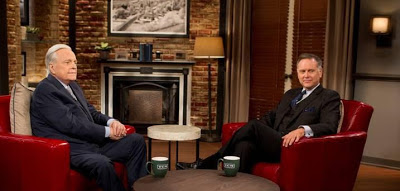January 2013 brings, at last, the much-anticipated Noir City XI, San Francisco's 11th annual film noir festival. Presented by the Film Noir Foundation at the city’s landmark movie palace, the Castro Theatre, the festival runs from January 25 – February 3 and will showcase 27 films!
Noir City XI begins with an opening night tribute to genre legend Peggy Cummins. Following Film Noir Foundation founder/author/film historian Eddie Muller’s onstage interview with Miss Cummins, Gun Crazy (1950), the noir classic that made her an icon, will screen. Other festival highlights include three world premiere restorations along with the U.S. premiere of 4K digital restorations of Sunset Blvd. (1950) and Experiment in Terror (1962). Also premiering will be 4K digital restorations of two of 1953’s first 3-D films, Inferno and Man in the Dark.
But wait, there’s more…
But wait, there’s more…
Returning with the 2013 festival will be the Noir City Nightclub event, set for Saturday night, February 2, at San Francisco's Regency Lodge. There'll be music - from jazz to noir-pop to the torch stylings of songstress Laura Ellis - and dancing and cocktails and a walk on the wild side courtesy of "international striptease sensation" Evie Lovelle.
Czar of Noir Eddie Muller, who not only founded the FNF in 2002 but also emcees the San Francisco festival (and nightclub), is also about to appear on Turner Classic Movies. Beginning at 8pm Eastern/5pm Pacific on Thursday, January 17, Muller will co-host "A Night in Noir City" with Robert Osborne. On the schedule are five films: Cry Danger (1951) starring Dick Powell and Rhonda Fleming, Phil Karlson's 99 River Street (1953) with John Payne and Evelyn Keyes, Tomorrow is Another Day (1951) with Steve Cochran and Ruth Roman, Michael Curtiz's The Breaking Point (1950) starring John Garfield and Patricia Neal and The Prowler (1951), directed by Joseph Losey and starring Van Heflin and Evelyn Keyes.
In his 1998 book Dark City: The Lost World of Film Noir, Muller contended that among the many film varieties to come out of the studio era, film noir held up best: "Film noir pointed toward the black core of corruption in our "civilized" society and our primitive essence. The struggle of the individual to transcend or escape provided the emotional tension. That's the theme that makes noir so compelling for the contemporary crowd." Muller was onto something, for over time film noir has proven to be a genre of lasting appeal. With each successive year, the popularity of Noir City has grown, its program schedule has expanded and the Film Noir Foundation has been able to restore ever more films. Today, San Francisco's noir-fest is the kick off point for other film noir festivals around the country, with Noir City events following in Seattle in February, Los Angeles in April, Chicago in August and Washington, DC, in October.
Click here to learn more about Noir City
Click here to learn more about the Film Noir Foundation
Czar of Noir Eddie Muller, who not only founded the FNF in 2002 but also emcees the San Francisco festival (and nightclub), is also about to appear on Turner Classic Movies. Beginning at 8pm Eastern/5pm Pacific on Thursday, January 17, Muller will co-host "A Night in Noir City" with Robert Osborne. On the schedule are five films: Cry Danger (1951) starring Dick Powell and Rhonda Fleming, Phil Karlson's 99 River Street (1953) with John Payne and Evelyn Keyes, Tomorrow is Another Day (1951) with Steve Cochran and Ruth Roman, Michael Curtiz's The Breaking Point (1950) starring John Garfield and Patricia Neal and The Prowler (1951), directed by Joseph Losey and starring Van Heflin and Evelyn Keyes.
 |
| Robert Osborne and Eddie Muller, A Night in Noir City, January 17 |
In his 1998 book Dark City: The Lost World of Film Noir, Muller contended that among the many film varieties to come out of the studio era, film noir held up best: "Film noir pointed toward the black core of corruption in our "civilized" society and our primitive essence. The struggle of the individual to transcend or escape provided the emotional tension. That's the theme that makes noir so compelling for the contemporary crowd." Muller was onto something, for over time film noir has proven to be a genre of lasting appeal. With each successive year, the popularity of Noir City has grown, its program schedule has expanded and the Film Noir Foundation has been able to restore ever more films. Today, San Francisco's noir-fest is the kick off point for other film noir festivals around the country, with Noir City events following in Seattle in February, Los Angeles in April, Chicago in August and Washington, DC, in October.
Click here to learn more about Noir City
Click here to learn more about the Film Noir Foundation
 |
| Peggy Cummins and Eddie Muller backstage at TCM's 2012 Classic Film Festival |












































